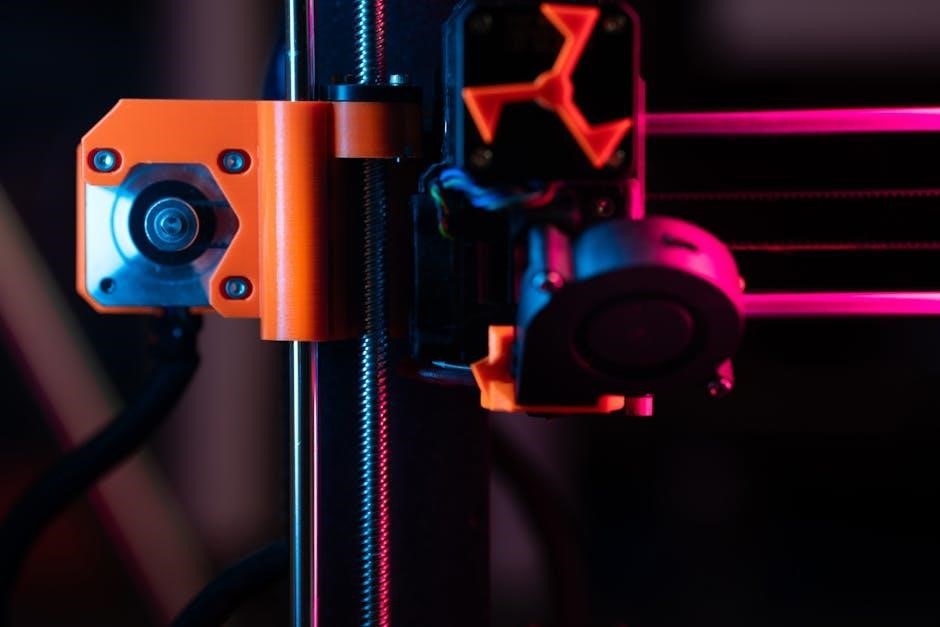wolf design guide

Welcome to the Wolf Design Guide‚ your comprehensive resource for creating exceptional kitchen experiences. This guide outlines design principles‚ installation best practices‚ and product integration strategies to ensure seamless functionality and aesthetic appeal. Whether you’re designing a residential or commercial space‚ the Wolf Design Guide provides the foundational knowledge needed to bring your vision to life with precision and style.
1.1 Overview of Wolf Design Philosophy
The Wolf Design Philosophy revolves around creating harmonious‚ functional‚ and visually stunning kitchen spaces. It emphasizes a balance between form and function‚ ensuring products are both aesthetically pleasing and highly functional. This approach prioritizes minimalism‚ clean aesthetics‚ and precision engineering‚ reflecting Wolf’s commitment to excellence. By focusing on user-centered design‚ the philosophy ensures products meet real-world needs while inspiring creativity in cooking and entertaining. It also encourages innovation‚ blending tradition with modern technology to create timeless designs.
1.2 Importance of User-Centered Design
User-centered design is the cornerstone of Wolf’s approach‚ ensuring products align with real user needs. By prioritizing empathy and understanding‚ Wolf creates intuitive‚ functional solutions that enhance the cooking experience. This methodology involves extensive user research‚ feedback integration‚ and iterative design refinement. The result is products that not only meet but exceed user expectations‚ fostering a deep connection between the user and the product. This focus on user-centricity drives innovation and satisfaction‚ making Wolf a leader in kitchen design.
1.3 Evolution of Wolf Design Principles
Wolf’s design principles have evolved significantly over the years‚ reflecting advancements in technology and shifting user preferences. From the introduction of dual convection ovens to the integration of smart home systems‚ Wolf has consistently innovated while maintaining its commitment to quality and user-centric design. Historical milestones include the adoption of minimalistic aesthetics‚ enhanced material durability‚ and the incorporation of feedback-driven design improvements. This evolution ensures Wolf products remain at the forefront of both functionality and style‚ meeting the demands of modern kitchens while honoring the brand’s legacy of excellence.

Understanding User Needs in Wolf Design
This section explores the importance of aligning design with user needs‚ ensuring Wolf products meet both functional and emotional expectations through empathy‚ feedback‚ and iterative design processes.
2.1 User Need Statements: Definition and Purpose
User need statements are concise‚ actionable problem statements that summarize a user’s challenge‚ their role‚ and the significance of solving the issue. These statements are pivotal in the design thinking process‚ guiding the development of tailored solutions. By focusing on the user’s perspective‚ they ensure designs remain human-centered‚ providing a clear metric for success. This approach helps Wolf designers address real needs effectively‚ fostering innovation and user satisfaction in every product.
2.2 Empathy Mapping for Effective Design Solutions
Empathy mapping is a powerful tool in Wolf’s design process‚ enabling designers to deeply understand user perspectives and needs. By visually organizing qualitative data‚ it captures what users say‚ think‚ feel‚ and do. This approach fosters a human-centered design ethos‚ ensuring solutions align with real-world experiences. Through empathy mapping‚ Wolf prioritizes user pain points‚ translating them into actionable insights that drive intuitive and meaningful design innovations‚ ultimately enhancing product usability and satisfaction.
2.3 Prioritizing User Needs in the Design Process
Prioritizing user needs is crucial in Wolf’s design process to ensure solutions are both functional and meaningful. By engaging with users early and consistently‚ designers gather insights to identify and rank needs based on importance and impact. This systematic approach ensures that design decisions align with user expectations and pain points‚ fostering intuitive and satisfying experiences. Regular user feedback loops refine priorities‚ balancing technical feasibility with emotional resonance to create products that resonate deeply with end-users.
Core Design Principles for Wolf Products
Wolf products embody minimalism‚ symmetry‚ and premium materials‚ ensuring timeless aesthetics and durability. These principles guide the creation of cohesive‚ functional designs that elevate modern kitchens.
3.1 Minimalism and Clean Aesthetics
Wolf’s minimalist approach focuses on clean lines‚ uncluttered surfaces‚ and precise detailing. This aesthetic ensures products blend seamlessly into contemporary spaces while maintaining functionality. By eliminating unnecessary elements‚ Wolf designs emphasize sophistication and usability‚ creating a timeless appeal that complements any kitchen style. The use of high-quality materials further enhances the sleek‚ modern look‚ making Wolf products a perfect choice for those seeking elegance and performance.
3.2 Symmetry and Balance in Design
Symmetry and balance are cornerstone principles in Wolf design‚ ensuring visual harmony and functional coherence. Products are crafted to align seamlessly with surrounding elements‚ creating a balanced aesthetic that enhances the overall kitchen environment. This attention to proportion and alignment not only elevates the design but also ensures intuitive usability‚ making Wolf appliances both beautiful and practical for everyday use.
3.3 Material Quality and Durability
Wolf products are renowned for their exceptional material quality and durability‚ ensuring long-lasting performance and timeless appeal; Premium stainless steel‚ robust construction‚ and meticulous attention to detail guarantee resilience against wear and tear. Each component is carefully selected to withstand the demands of culinary excellence‚ delivering both reliability and sophistication. This commitment to quality ensures that Wolf appliances remain a cornerstone of your kitchen for years to come;

Installation and Specification Guidelines
Adherence to Wolf’s installation and specification guidelines ensures optimal performance‚ safety‚ and compliance. Proper electrical setup‚ precise measurements‚ and approved materials are essential for a flawless integration.
4.1 Electrical Requirements and Compliance
Ensuring compliance with electrical codes is critical for safety and functionality. Installations must meet local and national standards‚ with power supplies located as specified to avoid hazards. Proper grounding and circuit protection are essential‚ and all components must be certified to prevent issues. Adhering to these guidelines guarantees optimal performance and minimizes risks‚ aligning with Wolf’s commitment to quality and safety in every installation.
4.2 Dimensional Accuracy for Seamless Integration

Dimensional accuracy is vital for a flawless installation. Wolf products are designed with precise measurements to ensure compatibility and a polished appearance. Adhering strictly to the specified dimensions in the Wolf Design Guide prevents gaps‚ misalignment‚ and functional issues. Proper alignment ensures smooth operation and enhances the overall aesthetic‚ creating a cohesive and professional finish in any kitchen setup. Accuracy here is key to achieving the desired integration and performance.
4.3 Avoiding Common Installation Mistakes
Common installation mistakes can lead to performance issues and safety hazards. Ensure all electrical connections meet code requirements and avoid using alternate materials or methods. Proper leveling and alignment prevent uneven cooking and appliance damage. Referencing the Wolf Design Guide ensures compliance with tested specifications‚ minimizing risks of product damage or inspection failures. By following guidelines‚ installers can achieve optimal performance and reliability in every setup‚ guaranteeing a flawless user experience. Precision is key to avoiding costly errors and ensuring longevity of Wolf products.
Wolf Product Integration with Sub-Zero
Wolf and Sub-Zero products are designed to integrate seamlessly‚ ensuring compatibility and optimal performance. Joint design specifications guarantee a cohesive and functional kitchen environment‚ enhancing user experience;
5;1 Compatibility and Joint Design Specifications
Wolf and Sub-Zero products are meticulously engineered to ensure compatibility‚ with shared design specifications for seamless integration. This collaboration guarantees a cohesive aesthetic and functionality‚ making installation straightforward. Both brands adhere to strict guidelines‚ ensuring appliances work harmoniously together. By following the joint design specifications‚ users can achieve a unified kitchen system that enhances performance and user experience; Proper installation as per the guide ensures optimal functionality and avoids potential issues. This integration is key to creating a high-performance kitchen ecosystem.
5.2 Smart Technology and Dual Convection Features
Wolf products integrate cutting-edge smart technology‚ offering advanced cooking modes and precision control. The dual convection feature ensures even heat distribution‚ enhancing cooking results. Smart home compatibility allows seamless integration with Sub-Zero systems‚ enabling users to manage settings effortlessly. These innovations redefine modern cooking‚ combining efficiency with sophistication. The user-centric design ensures intuitive operation‚ making it easier to achieve professional-grade culinary outcomes in any kitchen setting.

5.3 Ensuring Optimal Performance Together
For peak performance‚ Wolf and Sub-Zero products are designed to work harmoniously. Proper installation following the Wolf Design Guide ensures compatibility and efficiency. Regular maintenance and adherence to specifications are crucial for longevity. By integrating these systems‚ users achieve a seamless cooking experience‚ with both brands delivering superior quality and reliability. This synergy enhances overall kitchen functionality‚ making it easier to create exceptional culinary results every time.
Case Studies in Wolf Design Implementation
Explore real-world applications of Wolf products in residential and commercial settings. These case studies highlight successful design implementations‚ showcasing functionality‚ aesthetics‚ and performance in diverse kitchen environments.
6.1 Residential Kitchen Design Success Stories
Discover inspiring residential kitchens where Wolf products have been seamlessly integrated. From modern minimalist designs to traditional layouts‚ these success stories highlight how Wolf appliances enhance functionality and aesthetics. Homeowners and designers share experiences of achieving perfect cooking performance and timeless style. Explore how Wolf ovens‚ cooktops‚ and smart technology features like dual convection have transformed everyday cooking into exceptional culinary experiences‚ blending durability with sophisticated design to create inviting kitchen spaces.

6.2 Commercial Applications of Wolf Products
Wolf products excel in commercial kitchens‚ delivering high performance and durability for demanding environments. From restaurants to professional culinary spaces‚ Wolf appliances are chosen for their precision‚ reliability‚ and sleek design. Chefs and culinary teams rely on Wolf’s advanced features‚ such as dual convection and smart technology‚ to achieve consistent results. With a focus on heavy-duty construction and intuitive controls‚ Wolf products are ideal for commercial applications‚ ensuring efficiency and excellence in high-volume cooking scenarios while maintaining a sophisticated aesthetic.
6.3 Lessons Learned from Real-World Installations
Real-world installations highlight the importance of adhering to the Wolf Design Guide specifications to ensure optimal performance and durability. Common challenges include improper electrical setups and dimensional inaccuracies‚ which can lead to operational issues. Proper preparation and compliance with installation guidelines are crucial. Lessons learned emphasize the value of precise planning‚ skilled labor‚ and addressing potential site-specific challenges proactively to achieve seamless integration and long-term satisfaction with Wolf products in various settings.
User Experience and Feedback in Design
User feedback is crucial in refining Wolf products‚ ensuring they meet real-world needs. Continuous iteration based on user insights enhances functionality‚ usability‚ and overall satisfaction through innovative solutions.
7.1 Gathering User Feedback for Iterative Design
Gathering user feedback is essential for refining Wolf designs. Through surveys‚ interviews‚ and usability tests‚ designers gain insights into user experiences‚ identifying pain points and areas for improvement. This iterative process ensures products evolve to meet real-world needs‚ enhancing functionality‚ usability‚ and satisfaction. By actively listening to users‚ Wolf continuously refines its offerings‚ ensuring they align with customer expectations and deliver exceptional performance in real-world applications.
7.2 Addressing User Pain Points in Product Design
7.3 The Role of User Research in Innovation
User research plays a pivotal role in driving innovation at Wolf. By deeply understanding user behaviors‚ needs‚ and preferences‚ Wolf crafts products that resonate with real-world demands. Continuous feedback loops and iterative testing ensure designs evolve with user expectations. This research-driven approach fosters creativity‚ leading to cutting-edge solutions that enhance functionality and user satisfaction‚ solidifying Wolf’s reputation for innovative‚ user-centric design.

Future Trends in Wolf Design and Technology
Wolf is embracing sustainability‚ AI integration‚ and smart home systems to redefine modern kitchens. These trends promise innovative‚ eco-friendly solutions that enhance user experiences and efficiency.
8.1 Sustainability in Wolf Product Development
Sustainability is a top priority for Wolf‚ with a focus on eco-friendly materials and energy-efficient designs. Their products are crafted to minimize environmental impact while maintaining high performance. By using recyclable materials and optimizing energy consumption‚ Wolf aims to reduce its carbon footprint. Additionally‚ smart technology integration helps users monitor and control energy usage‚ promoting greener kitchen practices. Wolf’s commitment to sustainability ensures that their appliances not only enhance cooking experiences but also contribute to a more environmentally conscious future.
8.2 Integration of AI and Smart Home Systems
Wolf appliances now seamlessly integrate with smart home systems‚ offering advanced AI-driven features. Users can control cooking settings via voice commands or smartphone apps‚ ensuring a connected kitchen experience. AI technology optimizes cooking performance‚ predicting ideal temperatures and times. Compatibility with systems like Alexa and Google Home enhances convenience‚ while energy-efficient modes align with smart home automation. This integration not only streamlines cooking processes but also elevates user experience‚ making Wolf products a hub for modern‚ intelligent kitchens.
8.3 Emerging Design Trends for Modern Kitchens
Modern kitchens are embracing minimalism‚ smart technology‚ and sustainable materials. Wolf products align with these trends‚ offering clean‚ intuitive designs that enhance functionality. Smart home integration and energy-efficient appliances are increasingly popular‚ catering to eco-conscious users. Open layouts and multi-functional spaces are also rising in demand‚ allowing for seamless entertaining and cooking experiences. These trends reflect a shift toward sophistication‚ convenience‚ and environmental responsibility‚ making Wolf designs a perfect fit for contemporary kitchens.



Leave a Reply
You must be logged in to post a comment.